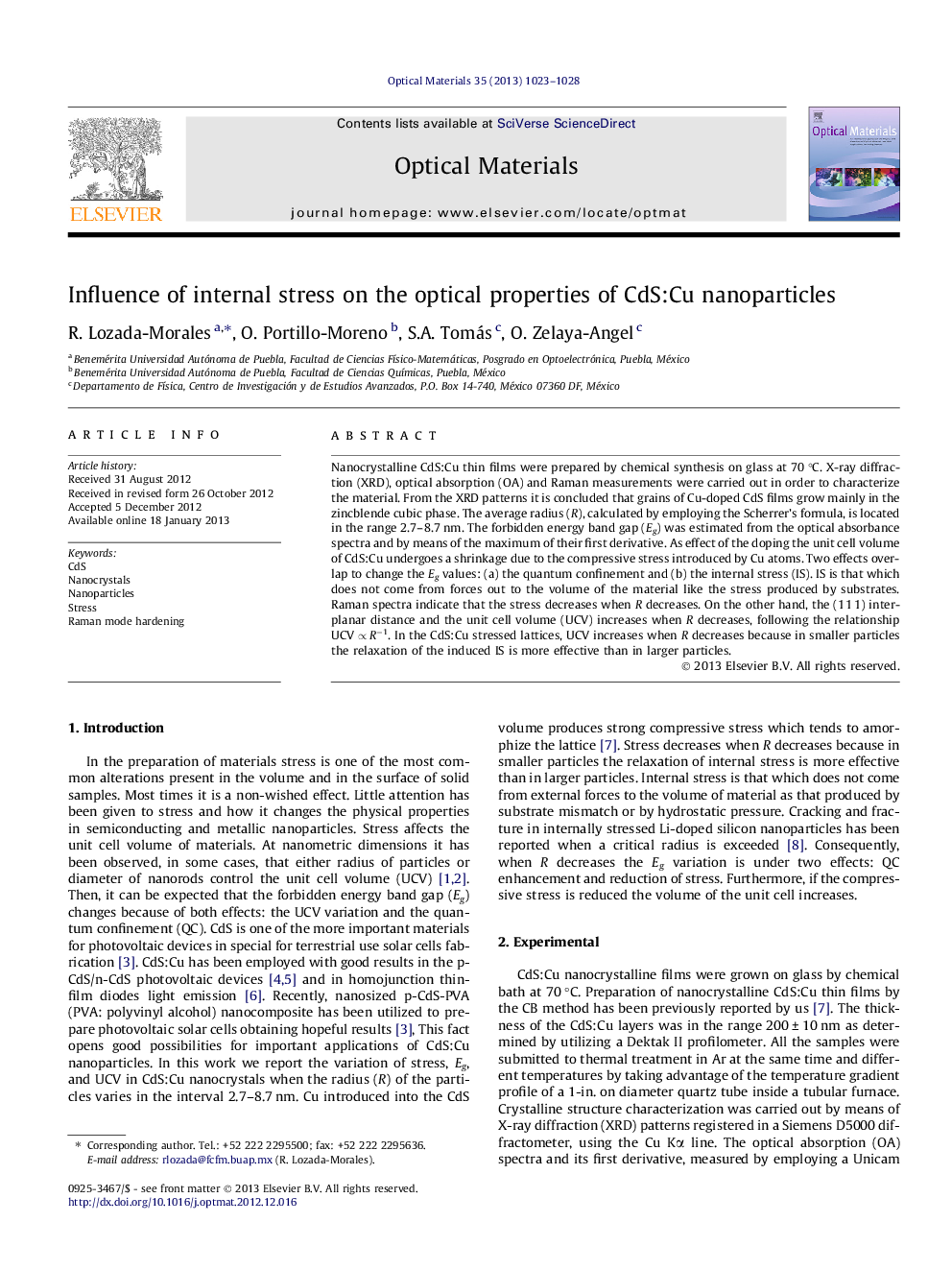| Article ID | Journal | Published Year | Pages | File Type |
|---|---|---|---|---|
| 1495366 | Optical Materials | 2013 | 6 Pages |
Nanocrystalline CdS:Cu thin films were prepared by chemical synthesis on glass at 70 °C. X-ray diffraction (XRD), optical absorption (OA) and Raman measurements were carried out in order to characterize the material. From the XRD patterns it is concluded that grains of Cu-doped CdS films grow mainly in the zincblende cubic phase. The average radius (R), calculated by employing the Scherrer’s formula, is located in the range 2.7–8.7 nm. The forbidden energy band gap (Eg) was estimated from the optical absorbance spectra and by means of the maximum of their first derivative. As effect of the doping the unit cell volume of CdS:Cu undergoes a shrinkage due to the compressive stress introduced by Cu atoms. Two effects overlap to change the Eg values: (a) the quantum confinement and (b) the internal stress (IS). IS is that which does not come from forces out to the volume of the material like the stress produced by substrates. Raman spectra indicate that the stress decreases when R decreases. On the other hand, the (1 1 1) interplanar distance and the unit cell volume (UCV) increases when R decreases, following the relationship UCV ∝ R−1. In the CdS:Cu stressed lattices, UCV increases when R decreases because in smaller particles the relaxation of the induced IS is more effective than in larger particles.
► The compressive internal stress of CdS:Cu is studied by Raman spectroscopy. ► The Cu into the CdS provokes compressive stress. ► The relaxation of CdS:Cu after annealing as a function of its radius are studied.
